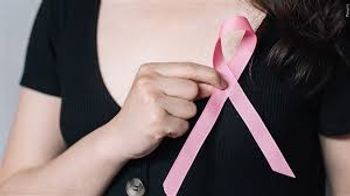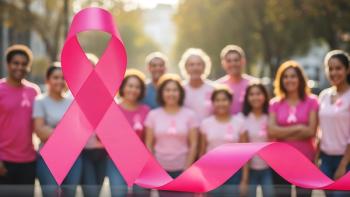
- Winter 2008
- Volume 7
- Issue 5
Building Futures
Breast cancer survivors find a constructive outlet for their altruism.
On a humid May morning in Texas, the Rev. Sheron Patterson, DMin, stands on the porch of a tidy red-brick home. The front lawn boasts new sod, and the inside smells of fresh paint and wood. Here in a southern Dallas subdivision, several Habitat for Humanity homes are under construction. But the senior pastor of Highland Hills United Methodist Church is helping dedicate this house—one built by cancer survivors she recruited, as well as their friends and families.
"This is a work of the Lord,” Patterson says of Breast Cancer Builds, the fledgling program she founded to enlist breast cancer survivors to build Habitat homes. “Showing up early in the rain, in the cold. Hammering, sawing, nailing, hitting our fingers, almost slicing our hands. Truly, God is amazing.”
Patterson conceived Breast Cancer Builds in 2007 while recovering from a double mastectomy. Breast cancer survivors, grateful and ready to help others, are proof, she says, that “there is life after breast cancer, and it can be better and sweeter than it was before.”
Allied with the Habitat for Humanity ministry of another local church, Patterson reached out through local media and her own website, asking for 200 volunteers to “pay forward” fruits of their survival.
Bubbling with joy, laughter, and love for other women they didn’t even know, they came. From as close by as Dallas and as far as suburbs an hour away, they came. For eight consecutive Saturdays beginning this past March, they came.
Survivor Candy Sheehan, 53, arrived the first day clad in jeans, boots, and sunglasses, and relishing the idea of building a home for a deserving family.
“During my treatments … I was on the receiving end of so much support and blessings and meals and everything, that it was really good for me to give back,” Sheehan says.
For community activists like her, who are involved in a variety of projects, much of the work focuses on funding and policies, she says. “This is a thing—you actually build it, you can touch it and feel it. It’s encouraging that life will continue in this place that we are building, and will become someone’s home. That’s a strong message.”
Juanita Valdez, a single mother of two boys, has sometimes seemed a bit overwhelmed by the help she is receiving.
“They’ve been through so much and they’re trying to help somebody else,” she says of the women who raised walls, pounded nails, and cut siding. “It makes me feel wonderful.”
The project has brought together “a rainbow coalition,” notes Breast Cancer Builds volunteer coordinator Linda Lydia, 58, a local real estate agent.
“We’re all drawn to it for the same reason,” says Lydia, an 11-year survivor. “If we’re not survivors we have a family member or a friend. … Such a bond develops with people who’ve been through this disease.”
Elaine Linn, a four-year survivor, quickly became a favorite among the volunteers. More than once she joked about her obvious lack of hair ever since cancer treatment in 2004. “But hey, I don’t have bad hair days.”
It’s a privilege to have a body well enough, and in shape enough, to come out and participate, says Linn, 65, an accountant. “I’m in great debt to the doctors and women that have come before. … It’s very important that people who have just been diagnosed know it’s not a death sentence. There are things beyond that.”
That was precisely the message Patterson hoped to impart with Breast Cancer Builds.
She echoes it in her closing words at the home’s dedication: “I am a survivor of breast cancer, and on Tuesday of this week I celebrated one year of life. … I call this a gratitude project because I am grateful, and we’re showing how grateful we are to the world.”
For more information about Breast Cancer Builds, visit Patterson's website at
Articles in this issue
about 17 years ago
Message from the Editorabout 17 years ago
Letters from Our Readersabout 17 years ago
An Update From Friendsabout 17 years ago
New Law Protects College Students' Health Insuranceabout 17 years ago
Newman Passes, Cancer Aid Goes Globalabout 17 years ago
9th Annual Conference for Young Women Affected by Breast Cancerabout 17 years ago
YMCA and LAF Develop Exercise Programsabout 17 years ago
Q&A: CT Colonographyabout 17 years ago
Finasteride Comes Out on Top in Prostate Cancer Trialabout 17 years ago
Crazy Sexy Cancer Survivor



